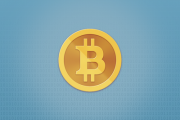Over the last 30 years, the amount of people living on less than $1 USD a day has been reduced by more than half. This is an incredible milestone of which many people aren’t aware, but there is still much work to be done — according to the World Bank’s World Development Indicators, the average income of people living in sub-Saharan Africa is still just $1 USD/day.
While it is true that African nations are poor, specifically those in the fragile states of sub-Saharan Africa, it is also common nonetheless to see shoeless Africans wielding smartphones. Indeed, according to a study done by the Global System Mobile Association in July of 2018, more than half of Sub-Saharan Africa will be subscribed to a mobile service by 2025. While it is true that smartphone adoption is slower than that of standard mobile devices, the PEW Research Center has found that smartphone ownership in Sub-Saharan Africa is still increasing.
Amazingly, many of these countries have progressed through the industrial revolution at an incredible pace, and are moving rapidly towards an unprecedented form of technological revolution that can be attributed to smartphone manufacturing right on their doorstep.
Whereas the cost of a smartphone in Africa was $230 in 2012, one can occasionally find a handset for as little as $50 in 2018. Reduction in poverty combined with the introduction of new tech is creating budding markets in areas of the world one would least expect.
Today sixteen African countries boast functioning and transparent stock markets, with market capitalization in 2008 around $200 billion. — Dead Aid, Dambisa Moyo
While the growth in African economies is admirable, there are two major problems with the traditional stock market system: resources and accessibility.
Even with the introduction of cheap smartphones, most Africans are unable to invest in their own emerging markets because they have zero financial margin. Dambisa Moyo, in her book Dead Aid quoted above points out, “with over half of the 700 million Africans living on less than a dollar a day, sub-Saharan Africa has the largest proportion of poor people in the world — some 50% of the world’s poor.” At these levels, simply putting food on your table and sending your children to school is practically impossible.
Further, Moyo highlights another roadblock to African economic growth: governments. Currently, “some 50% of the continent remains under non-democratic rule. According to the Polity IV database, Africa is still home to at least eleven fully autocratic regimes.”
There is very little freedom indeed in Africa, and it is the general consensus that the status quo won’t solve the problems the Global South is facing. So what next?
Before we dive into a daydreamer’s ideal application of cryptocurrencies, solar panels, and mesh networks in sub-Saharan Africa, a brief look into a poverty alleviation method is necessary. That intervention is microfinance.
Source/More: Bitcoin for the Unbanked: How Mesh and Microfinance Could End Poverty as We Know It
















